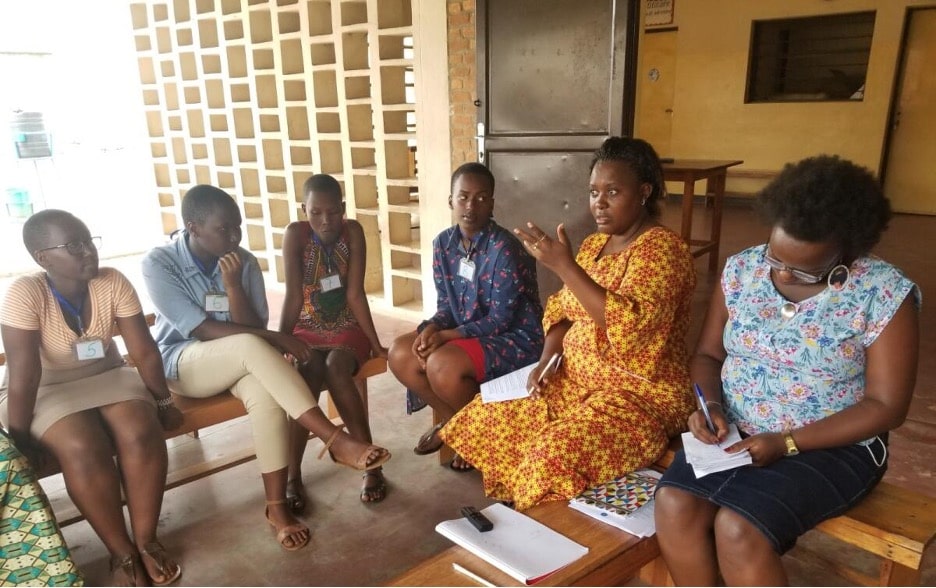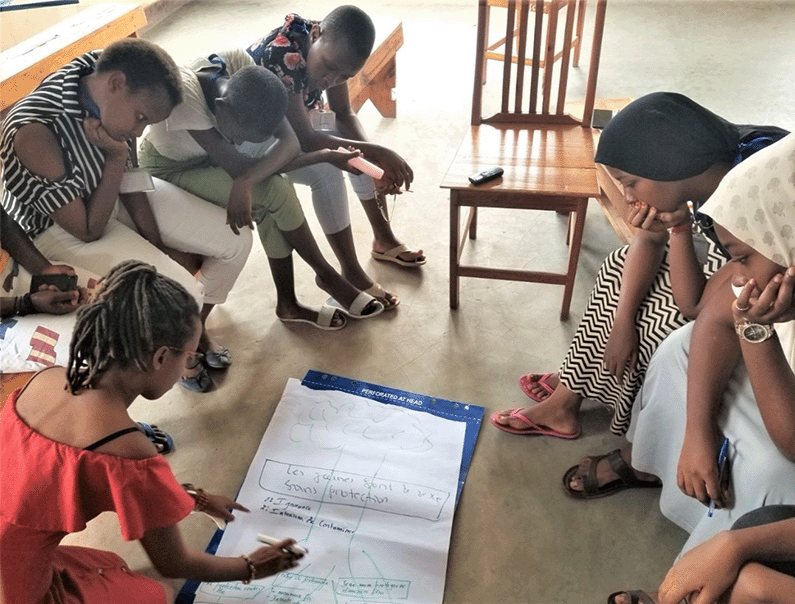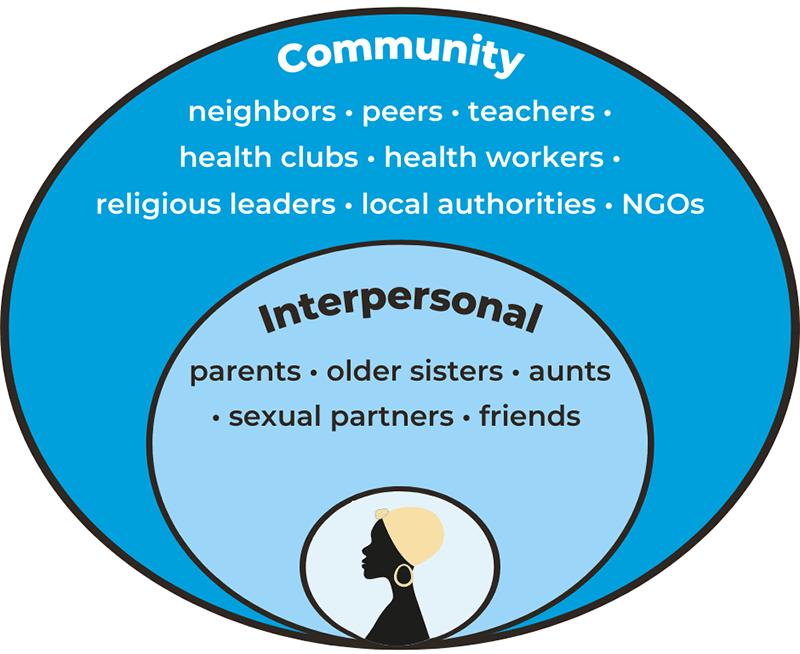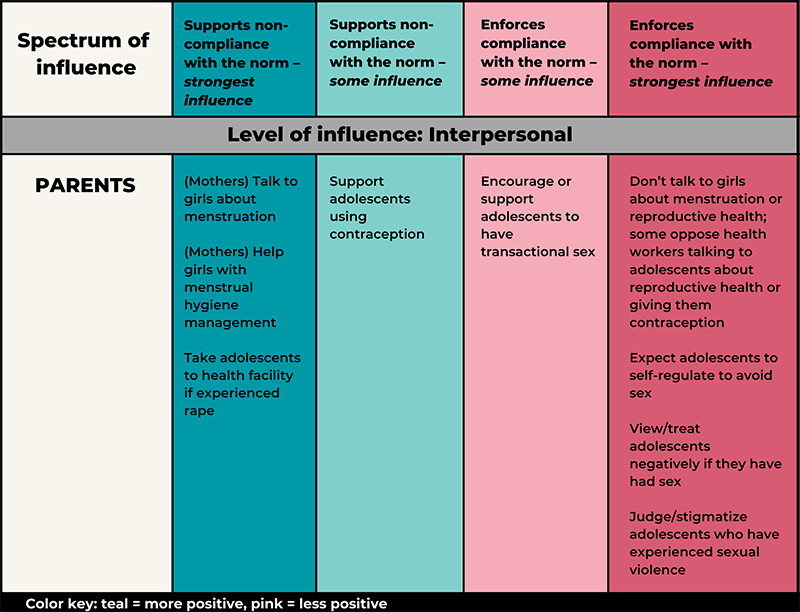Increasing the Impact of Reproductive Health Programs
Leveraging Key Influence Groups

This piece summarizes a recent study by the USAID-funded Passages Project exploring social norms impacting the reproductive health of adolescent girls and young women in Burundi. We explore how the research findings can be applied in the design of reproductive health programs to identify and involve key influence groups that affect social norms.
“…The dialogue between parents and children regarding sexual and reproductive health…does not exist! Why? Because of social norms, parents think that by talking about this with their children, they will be saying bad things. That’s why menstruation comes as a surprise to 13- or 14-year-olds.”
Social norms are particularly relevant among young people. Compared to adults, young people have less power in society to make or break social rules. Additionally, peer relationships become more influential during adolescence. In many low- and middle-income countries, such as Burundi, social norms are not well documented, but likely have a large influence on adolescent girls and young women’s ability to access reproductive health information and care.
- Social norms: Perceived informal, mostly unwritten, rules that define acceptable, appropriate, and obligatory actions within a given group or community.
- Key influence group: A group of people who play a specific role in a social setting and whose opinion or behavior influences a norm in terms of either enforcing it or supporting individuals to go against it.
- Enforcer: Exerts social pressure to comply with a norm.
- Social supporter: Supports individuals or helps overcome a norm.
- Sanctions: Negative (e.g., punishments or stigmatization) or positive (e.g., rewards or encouragement) social consequences of opposing or following a norm.
The Passages Project—funded by the United States Agency for International Development (USAID)— recently completed a qualitative study researching social norms affecting the reproductive health of adolescent girls and young women in four provinces in Burundi. Focus group discussions and a problem tree exercise adapted from the Social Norms Exploration Tool (SNET) explored social norms around the following:
- Menstruation and menstrual hygiene management (MHM).
- Sexual risk behaviors.
- Sexual violence.
- Fertility and voluntary use of family planning.
The study also examined the groups of people that influence norms for each of these behaviors, and in what ways.

What Can We Learn from the Burundi Study?
-

Figure 1. Proximity of influencers to adolescent girls and young women. Click here for web accessible version.
Targeting adolescents alone will not achieve social norms change: The study identified eight different reproductive health social norms that adolescent girls were expected to follow, such as managing their menstrual hygiene discreetly and not getting pregnant before marriage. Yet, they did not have sufficient support, power, agency, or information to make informed, independent choices about their reproductive health. Rather, the social norms that adolescents are pressured to comply with are enforced and upheld by many others in the broader social community.
- Adolescents are influenced directly and indirectly by different groups: Study participants named a variety of different types of people who influence adolescent reproductive health norms. Some groups included individuals such as parents, sexual partners, and peers with whom adolescents interact frequently and have direct interpersonal relationships. Other groups within the community, such as religious leaders, local administrators, and health providers, have less direct interaction with adolescents but still exert influence due to their social status.
- Influence can be both positive and negative: The influence of these groups took a variety of forms, ranging from pressuring adolescents to comply to supporting or helping them overcome harmful social norms. We refer to these groups as Enforcers and Social Supporters, respectively. In addition, these Enforcers and Social Supporters placed both negative and positive social consequences (sanctions) on adolescents. For example, community members shamed (negative sanction) adolescent girls for using contraception (a behavior that was not a social norm).
- Influence groups play multiple roles: Some influence groups served as both Enforcers and Social Supporters. For example, parents influenced adolescents’ reproductive health social norms in multiple ways (Figure 2).

Figure 2. Illustration of range of parental influence on adolescents’ reproductive health norms compliance.
Click here for web accessible version.
How Can These Learnings be Applied in Programs?
The fact that multiple influence groups exist, many of which both enforce and provide support for opposing harmful norms, has important implications for program design and implementation.
- Identify indirect as well as direct influences: Identifying groups with both direct and indirect influence on specific behaviors in a given social context should be considered during program design. For example, community members, particularly those with more social status or power, could be equally as important as family members and peers who have direct relationships with program participants.
- Involve multiple groups in addition to adolescents: Since adolescents do not hold the power to change or defy social norms by themselves, programs are likely to be more effective when they involve key influence groups in meaningful ways. Two examples are convening health providers to reflect on their own biases and working with faith leaders to incorporate positive views on reproductive health in their sermons.
- Encourage and redirect simultaneously: Programs should keep in mind that many influence groups play both positive and negative roles in upholding social norms. Program messages and activities should be designed to minimize and redirect how these groups enforce harmful norms. At the same time, programs should nurture the positive roles that these groups play, which could contribute to the development of new positive norms.





